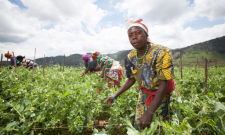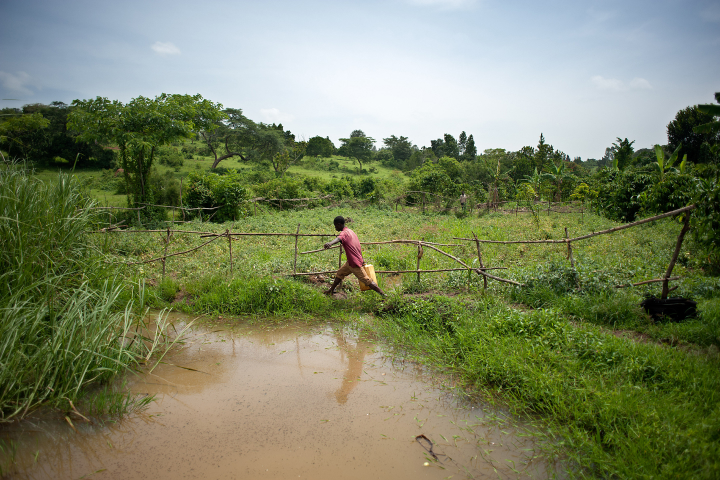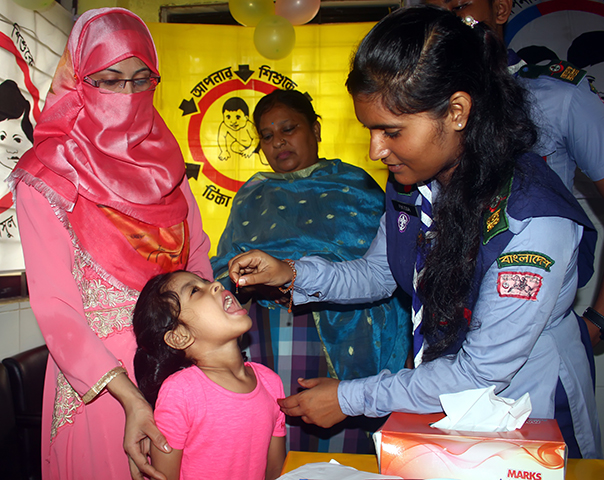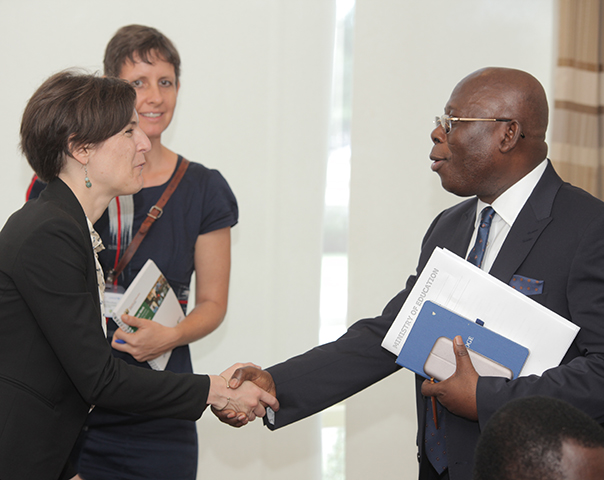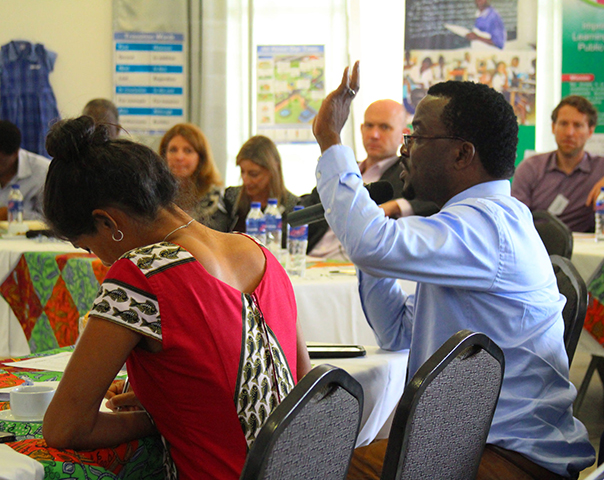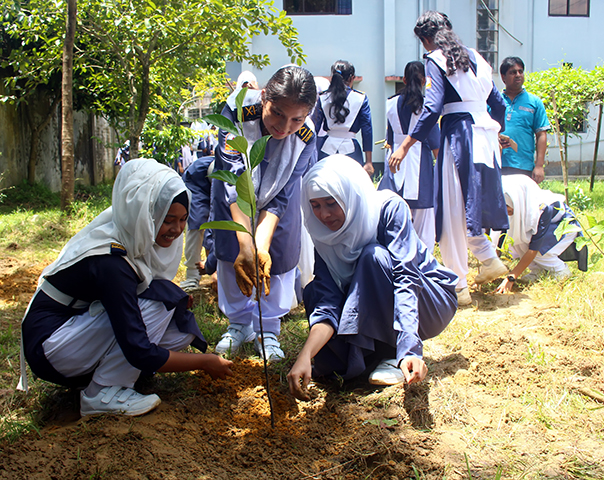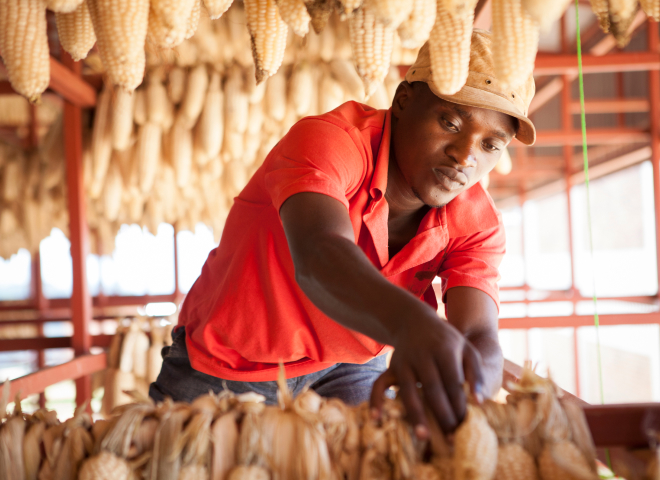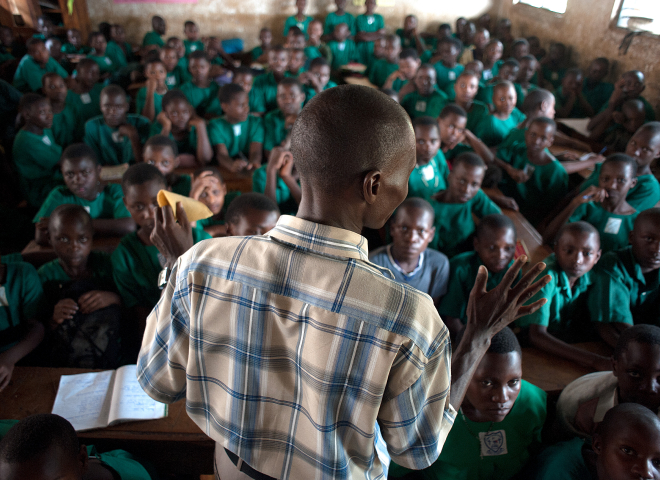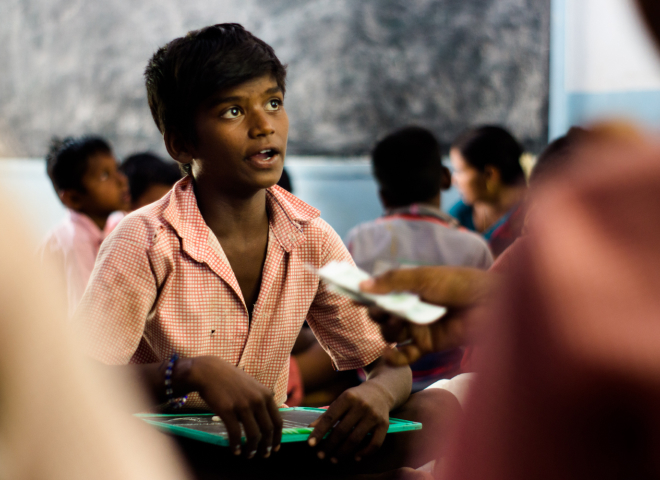Encouraging Adoption of Rainwater Harvesting Tanks Through Collateralized Loans in Kenya
Abstract
In Sub-Saharan Africa, the adoption of promising agriculture technologies has been limited. Researchers in Kenya used a randomized evaluation to examine the effect of asset collateralized loans on the take-up of rainwater harvesting tanks and any subsequent impacts on dairy production, time use, or girls’ enrollment in school. Access to asset-collateralized loans improved milk production specifically for those without access to piped water before the start of the study. In addition, it reduced the time girls in households spent fetching water by 35 percent, and increased the probability that girls were enrolled in school by 4 percentage points.
Policy Issue
Over the last decade, billions of dollars have been invested in the development of new agricultural technologies, which have the potential to contribute to economic growth and poverty alleviation amongst the poor. However, in Sub-Saharan Africa, the adoption of these promising agriculture technologies has been limited. Low adoption rates may be explained in part by credit constraints, which prevent many smallholder farmers from making the often large, initial investment in a new technology. A sizeable initial deposit or a guarantor is often required to receive a loan, restricting access for most. In developed countries, guarantor requirements are uncommon; instead, loans for purchase of houses, vehicles, and small business equipment often use the assets themselves as loan collateral. Using assets as collateral is rare in developing countries, where credible and efficient institutions and processes to seize collateral may be lacking. But in certain environments or for certain products—like water tanks, which are large and difficult to hide or relocate, making repossession feasible—can asset collateralization expand access to credit without affecting repayment rates?
Context of the Evaluation
Almost 80 percent of the Kenyan population lives in rural areas, where many suffer from significant water constraints. About 96 percent of cropland in Kenya is rain-fed and the rains are both seasonal and unpredictable. In recent years, much of rural Kenya has been hit by extreme droughts, which can be particularly problematic for dairy cattle, which require a consistent and regular water supply. Dairy farming is common in Kenya’s Central and Rift Valley provinces, the sample area for this study. The smallholder dairy farmers in the study sample had an average herd size of two cows, but 32 percent of households reported loosing at least one cow to drought in the year prior to the study, and 52 percent of households had a cow get sick. Without easy access to water, sample farmers reported spending a considerable amount of time (ten hours per week) taking cows to a water source. Technologies, such as rainwater harvesting tanks, that help to give dairy farmers reliable and convenient access to water, could improve their productivity and other economic outcomes.
Details of the Intervention
Researchers used a randomized evaluation to examine the effect of asset collateralized loans on the take-up of rainwater harvesting tanks and any subsequent impacts on dairy production, time use, or girls’ enrollment in school.
In partnership with a local dairy cooperative, researchers offered smallholder dairy farmers in central Kenya a loan to purchase a durable, 5,000-liter rainwater harvesting tank. The market price of the tanks at the time of the study was Ksh 24,000 (USD 320), or roughly 13 percent of annual total household consumption in the sample. A full tank would last between 17 days and 6 weeks depending on whether the water was used for livestock, domestic use, or both.
From a sample of 3,000 farmers who sold milk to a local dairy cooperative, researchers randomly assigned 1,804 to receive one of four initial loan offers. The value and terms of the loan were the same for all four offers: the loan could only be used to purchase a water tank, the value of the loan was set equal to the market price of the tank (USD 320), and all borrowers had to make a minimum deposit of Ksh 1,000 (USD 15).
The four different loan offers varied in the deposit and guarantor requirements, and whether the asset was pledged as collateral.
- 100 percent secured joint-liability loan - required borrowers to make a deposit equivalent to one-third of the value of the loan in their savings account. Three guarantors were also required to insure two-thirds of the loan amount through savings or shares in the dairy cooperative. This offer was essentially the same as the standard contract used by the cooperative when it gave out loans.
- 4 percent deposit loan - used the water tank asset as collateral but carried no other up-front requirement apart from the small, Ksh 1000 (USD 15) deposit, equivalent to 4 percent of the loan amount, required of all borrowers.
- 25 percent deposit loan – used the water tank asset as collateral and required a larger deposit of Ksh 6,000, equivalent to 25 percent of the loan amount.
- 25 percent guarantor loan – used the water tank asset as collateral and also required a single guarantor to pledge 21 percent of the loan amount (Ksh 5,000), in addition to the Ksh 1,000 deposit from the borrowing farmer.
Researchers anticipated that take-up rates would vary across these groups due to differences in the perceived profitability of borrowing under the given terms, differences in access to guarantors, and differences in farmer productivity and characteristics. In order to distinguish between these factors, farmers in groups 3 and 4 were randomly divided into two subgroups. Half of the farmers who received offer 3 or 4 had the requirements waived after the loan contract was signed; in group 3, the deposit amount in excess of the minimal 4 percent deposit was returned, and in group 4, the guarantor was absolved of any responsibility for the loan and his deposit was returned.
For all six resulting intervention groups, the timeline for the loan was 24 months and monthly repayments consisted of a fixed amount (Ksh 1,000) plus interest (1 percent per month) on the declining principal balance.
The default procedures were the same across all intervention groups. When a farmer fell two months behind, he received a letter warning him that he was pending default and had two months to pay off the late amount. If the payment was still outstanding after 60 days, the cooperative applied any deposits held to the balance. If a balance still remained, the farmer was given an additional 15 days to clear it, after which the cooperative would repossess the tank and sell it to cover the farmer’s loan obligations.
Results
Take-up rates: Take-up of the 100 percent secured joint-liability loan was low, with only 2.4 percent accepting the offer. Asset collateralization significantly increased take-up—nearly 28 percent of those who received the 25 percent deposit loan offer accepted, 23.5 percent of those who received the 25 percent guarantor offer accepted, and 44 percent of those who received the 4 percent deposit offer accepted.
Loan repayment rates and timing: About 63 percent of the farmers who took out a loan were late on their payments at least once during the course of the loan, but repayment performance did not vary significantly between treatment groups. The only major difference was the time taken to repay the loan: the average time taken to repay the 100 percent joint-liability loan was only nine months, while the other loans took between 17 and 22 months to pay off. No farmers defaulted on their loans and no tanks were repossessed.
Impact on economic and welfare outcomes: Access to asset-collateralized loans (through the 4 percent deposit offer) improved milk production specifically for those without access to piped water before the start of the study. In addition, it reduced the time girls in households spent fetching water by 35 percent, and increased the probability that girls were enrolled in school by 4 percentage points. This latter effect is striking because enrollment rates in the sample area were already high—girls’ enrollment at the start of the intervention was 94.6 percent. This was not the result of households being able to borrow to pay school fees (a common use of microfinance loans), but rather the ability to invest in an asset that reduced the demands on girls’ time.
Policy Impact and Implications
Having established the feasibility of the innovative loan product, the partner in the project, a Savings and Credit Cooperative Organization (SACCO), decided to adopt the asset-collateralized loan product and offer it to its members. The SACCO offers the loans to dairy farmers and has also offered the product to those in groups who guarantee themselves through mobilized savings in a common pool. Thirteen other SACCOs have chosen to implement similar programs, a change that may allow for wider adoption of rainwater harvesting tanks and other agricultural technologies among the members of the cooperative.



